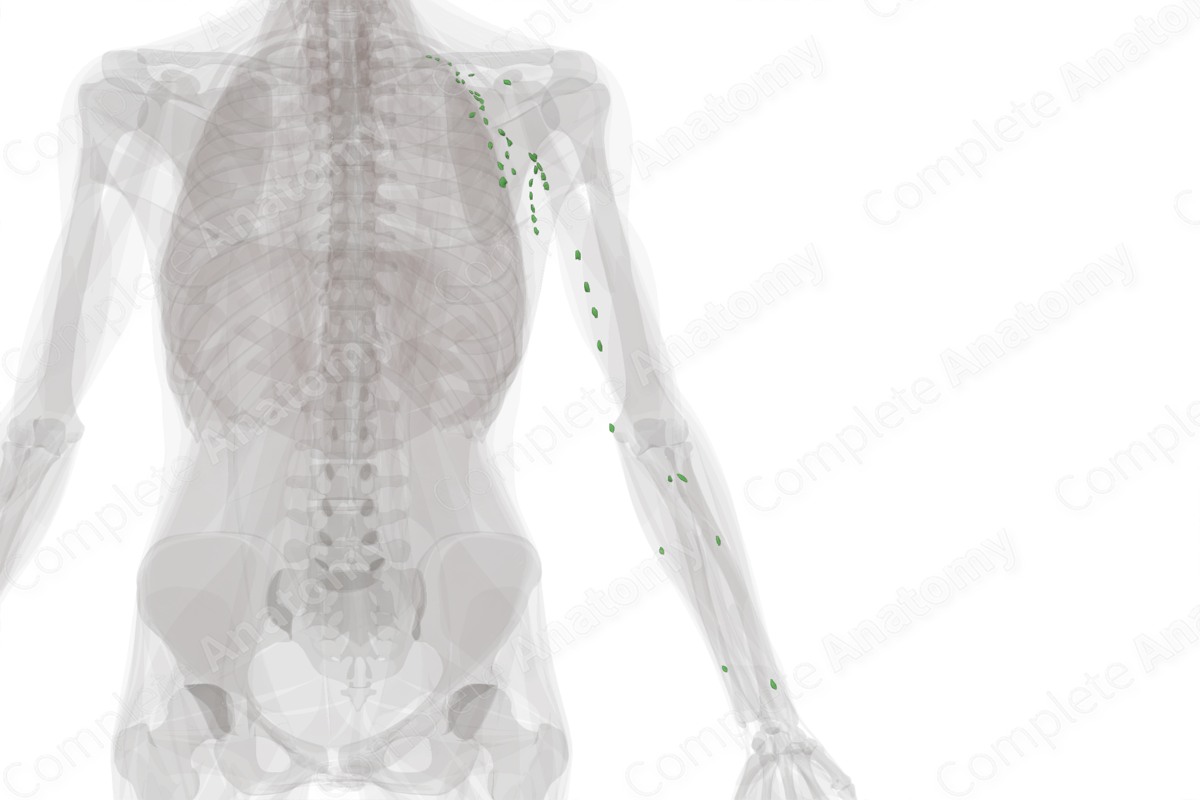
Description
Lymph of the upper limb is collected by vessels and nodes that are divided into superficial and deep groups. The superficial lymph nodes, including the supratrochlear and cubital nodes, collect lymph from the forearm and hand and transport it to the axillary lymph nodes. The deep lymph vessels of the upper limb primarily accompany the radial, ulnar, and interosseous vessels in the forearm and the brachial vessels in the arm, transporting lymph to the axillary lymph nodes.
The axillary lymph nodes are subdivided into a number of smaller groups of nodes including the pectoral, lateral axillary, posterior axillary, anterior axillary, interpectoral, central, and infraclavicular nodes.
Lymph in the axilla passes to the infraclavicular axillary lymph nodes beneath the clavicles. The efferent vessels of the infraclavicular nodes form the subclavian trunks. On the right side, the subclavian trunks open into the right lymphatic duct, while on the left, the subclavian trunk opens into the thoracic duct.




